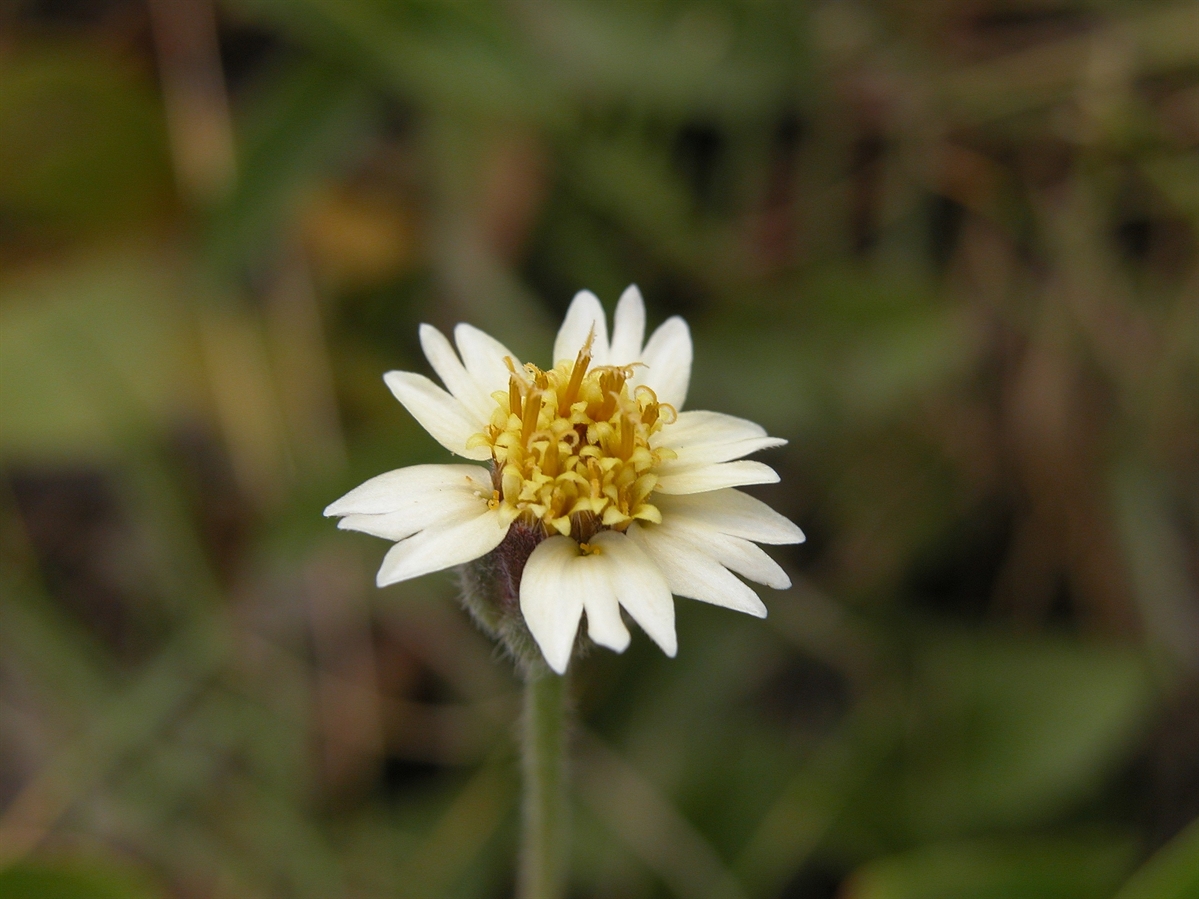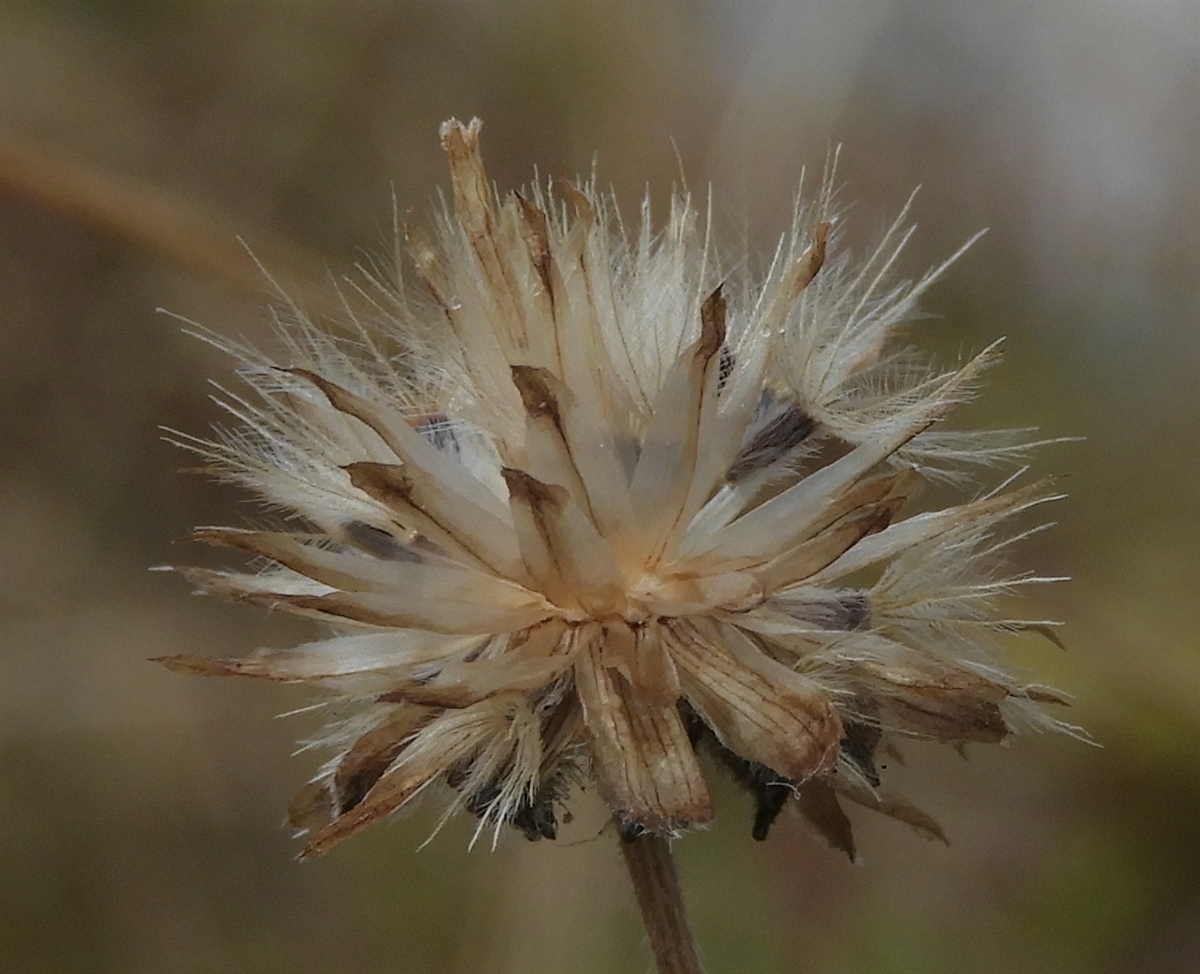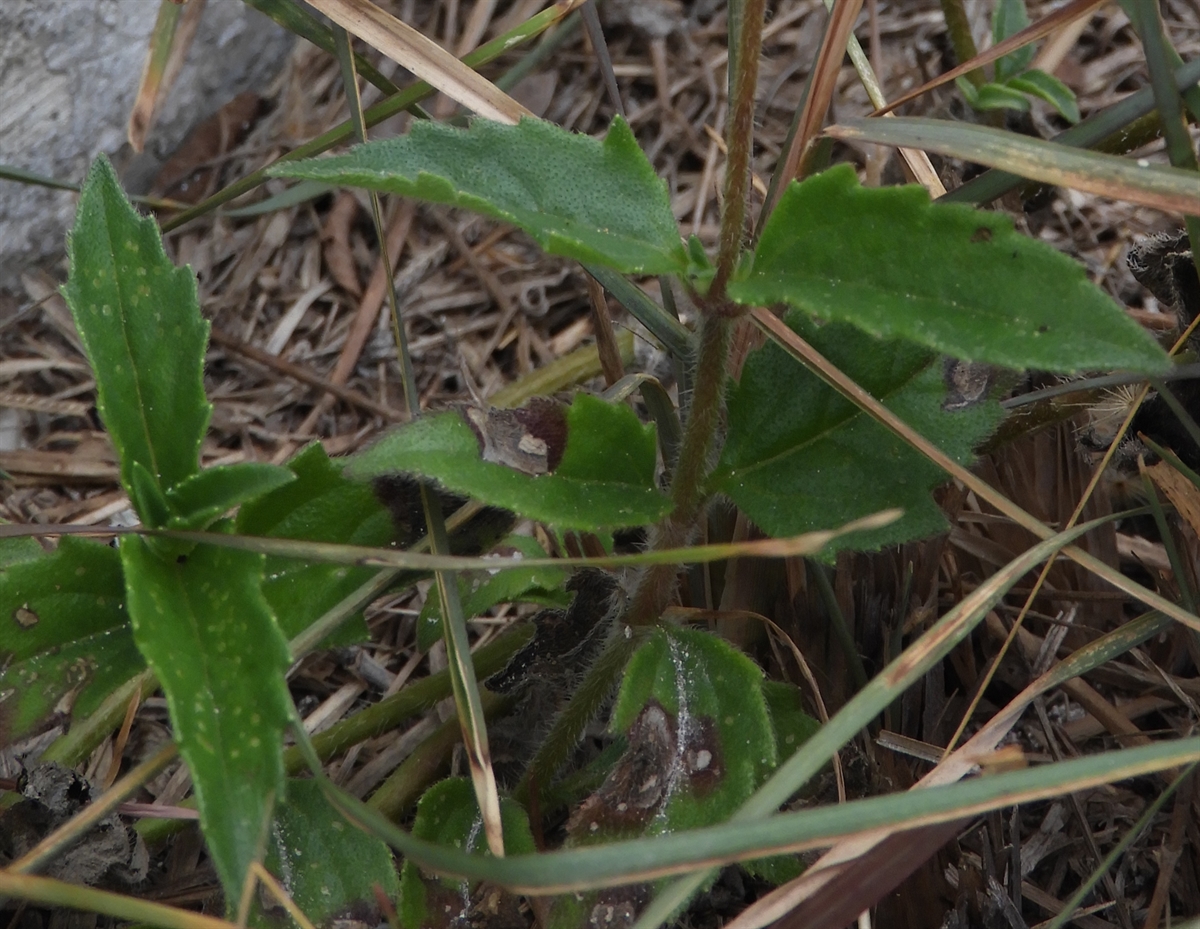Habit: Tridax procumbens is a perennial herb to 50 cm (usually lower) in height, with a tendency to spreading. The leaves are arranged oppositely, to 6 cm in length, ovate to lanceolate with a dentate margin, cuneate leaf base and acuminate leaf apex.
The complete, prefect, actinomorphic and incomplete, imperfect zygomorphic flowers are arranged in heads together forming a panicle like arrangement. The heads are subtended by a series of involucral bracts. The calyx is modified as a ring of small of fringed projections (pappus). There are both perfect and imperfect (carpellate) flowers in the heads. The perfect (disc) flowers are in the center and the imperfect (ray) flowers are arranged around the edge of the heads. Each flower is subtended by a bract.
The incomplete, imperfect, zygomorphic ray flowers have 3 tan/white fused petals and no stamens. The actinomorphic, complete, perfect, disk flowers have a corolla with 5 fused, yellow petals. There are 5 stamens fused at their base. In both types of flowers, the ovary is inferior with a single locule but only the perfect (disc) flowers have functional ovules. The fruit is a pubescent achene at maturity that retains the modified calyx (pappus) that is fused forming a shallow cup.
Habitat: Tridax procumbens occurs in Human Altered environments (yards, roadsides) and occasionally in open areas of Pine Woodlands.
Distribution: Tridax procumbens occurs throughout the island groupings of the Lucayan Archipelago, the Caribbean, the southern United States and Central and South America.
Medicinal/Cultural/Economic usage: Tridax procumbens is used to treat colds and flu (cough).


